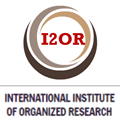Estratificación epidemiológica de la morbilidad por hepatitis viral tipo A. 10 de Octubre, 2010.
Resumen
Se realizó un estudio observacional descriptivo, para identificar y evaluar los factores de riesgo que influyen en la transmisión de hepatitis tipo viral A, en el municipio 10 de octubre, 2010, a fin de estratificar la vigilancia epidemiológica de esta entidad nosológica. Se realizó una estratificación de riesgo, siguiendo la metodología de índices fijos, para determinar estratos de transmisión de hepatitis viral A, y clasificarlos en bajo, mediano y alto riesgo, estableciendo zonas prioritarias para la intervención. Se confeccionó la base cartográfica digitalizada, a partir del análisis territorial de los factores de riesgo, mediante el diseño de capas de información espacial que permitieron la confección de diferentes mapas. Dentro de los factores de riesgo que influyen en la transmisión de la hepatitis A, están el agua de consumo y desbordamientos de residuales. Los consejos populares de mediano riesgo fueron Jesús del Monte, Lawton y Tamarindo y Lúyano (alto riesgo), donde se concentra el 78 % de la población; se seleccionaron estos, para profundizar los factores de riesgo antes mencionados, y contribuir a la toma de decisiones oportunas de los problemas identificados. La distribución territorial de factores de riego, demuestra la relación de la morbilidad por hepatitis viral A en el municipio 10 de octubre. Esto evidencia que los factores estudiados intervienen en la etiología de esta enfermedad, lo que se pudo comprobar con el uso de la metodología de estratificación de riesgo empleada.
Palabras claves: hepatitis viral tipo A; vigilancia; factores de riesgo; estratificación de riesgo; toma de decisiones.
ABSTRACT
He/she was carried out a descriptive observational study, to identify and to evaluate the factors of risk that influence in the transmission of hepatitis viral type TO, in the municipality October 10, 2010, in order to stratify the epidemic surveillance of this entity nosológical. He/she was carried out a stratification of risk, following the methodology of fixed indexes, to determine strata of transmission of viral hepatitis TO, and to classify them in under, medium and high risk, establishing high-priority areas for the intervention. The digitized cartographic base was made, starting from the territorial analysis of the factors of risk, by means of the design of layers of space information that you/they allowed the making of different maps. Inside the factors of risk that influence in the transmission of the hepatitis TO, they are the consumption water and overflows of residual. The popular advice of medium risk were Jesus of the Mount, Lawton and Tamarind and Lúyano (high risk), where he/she concentrates the population's 78%; these were selected, to deepen the factors of risk before mentioned, and to contribute to the taking of opportune decisions of the identified problems. The territorial distribution of watering factors, demonstrates the relationship of the morbidity for viral hepatitis TO in the municipality October 10. This evidences that the studied factors intervene in the etiology of this illness, what could be proven with the use of the methodology of used stratification of risk.
Keys words: hepatitis viral type TO; surveillance; factors of risk; stratification of risk; taking of decisions.
Palabras clave
Enlaces refback
- No hay ningún enlace refback.
Copyright (c) 2012 Humberto Mendoza Rodríguez, Maribel Sánchez López, Jorge Alberto Martínez Isaac, Odalys Cutín Sánchez, Susana Solis Solis

Esta obra está bajo una licencia de Creative Commons Reconocimiento-NoComercial 4.0 Internacional.





 La revista está: Certificada por el CITMA
La revista está: Certificada por el CITMA